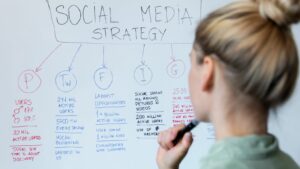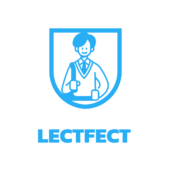Blended strategies offer the flexibility for learners to progress at their own pace while providing access to a wealth of resources beyond the confines of a physical classroom. The seamless integration of technology into education has revolutionized the way knowledge is imparted and acquired. As institutions and instructors continue to embrace these strategies, the potential for enriching educational experiences and fostering academic success becomes increasingly promising.
Blended Learning Strategies
 Blended learning is an innovative educational approach that combines traditional in-person teaching with online resources and digital tools. It offers a flexible and personalized learning experience by integrating face-to-face instruction with technology-enhanced activities. This method allows students to have more control over their learning pace and content delivery while providing educators with the opportunity to tailor instruction to individual student needs.
Blended learning is an innovative educational approach that combines traditional in-person teaching with online resources and digital tools. It offers a flexible and personalized learning experience by integrating face-to-face instruction with technology-enhanced activities. This method allows students to have more control over their learning pace and content delivery while providing educators with the opportunity to tailor instruction to individual student needs.
- Flexibility: Blended learning provides students with the flexibility to learn at their own pace and access resources according to their learning preferences.
- Personalization: This approach allows for personalized learning experiences by catering to different learning styles and adapting instruction to students’ unique needs.
- Technology Integration: The integration of technology into traditional classroom settings enhances engagement and facilitates interactive learning experiences.
- Collaborative Learning: Blended learning promotes collaboration among students, fostering teamwork, communication skills, and critical thinking abilities.
Incorporating these key elements into blended strategies can transform the educational landscape, creating dynamic and engaging learning experiences that cater to the diverse needs of students while leveraging the benefits of technology in the classroom.
Implementing Blended Learning in Different Educational Settings
 Blended learning is a versatile approach that can be implemented across various educational settings to enhance the learning experience for students. By combining traditional teaching methods with online resources and digital tools, educators can create a flexible and engaging environment that caters to the diverse needs of learners. Implementing blended learning in different educational settings such as K-12 education, higher education, and corporate training offers unique benefits tailored to each sector.
Blended learning is a versatile approach that can be implemented across various educational settings to enhance the learning experience for students. By combining traditional teaching methods with online resources and digital tools, educators can create a flexible and engaging environment that caters to the diverse needs of learners. Implementing blended learning in different educational settings such as K-12 education, higher education, and corporate training offers unique benefits tailored to each sector.
K-12 Education
In K-12 education, implementing blended learning provides an opportunity to personalize learning experiences for students at different grade levels. By integrating digital platforms and resources into traditional classroom settings, educators can offer interactive lessons that cater to individual learning styles. For example, using online modules for homework assignments allows students to analyis materials at their own pace, reinforcing concepts taught in class. Additionally, incorporating virtual simulations or educational games can make learning more engaging and effective for younger learners.
Higher Education
In higher education, blended learning is widely adopted to meet the demands of today’s tech-savvy students. By combining in-person lectures with online discussions and resources, professors can create a more interactive and collaborative learning environment. For instance, using online forums for class discussions encourages students to participate actively and share diverse perspectives. Moreover, incorporating multimedia elements such as videos and interactive quizzes into online modules can enhance student engagement and understanding of complex topics.
Benefits of Blended Strategies
Enhanced Learning Flexibility
 Blended strategies offer enhanced flexibility by combining face-to-face interactions with online learning components. Students have the flexibility to access materials and resources at their convenience, allowing them to pace their learning according to their individual needs. This approach accommodates different learning styles and preferences, empowering students to take control of their learning journey. With the ability to evaluate content online and engage in interactive activities in the classroom, learners can optimize their learning experience based on their own schedules and preferences.
Blended strategies offer enhanced flexibility by combining face-to-face interactions with online learning components. Students have the flexibility to access materials and resources at their convenience, allowing them to pace their learning according to their individual needs. This approach accommodates different learning styles and preferences, empowering students to take control of their learning journey. With the ability to evaluate content online and engage in interactive activities in the classroom, learners can optimize their learning experience based on their own schedules and preferences.
Improved Student Engagement and Performance
Blended strategies have been shown to significantly improve student engagement and performance. By incorporating interactive online content and digital tools, educators can create more dynamic and stimulating learning environments. This increased engagement translates to better retention of information, as students are actively participating in their learning process. The combination of online resources with traditional teaching methods caters to diverse learning styles, making learning more accessible and engaging for all students. Additionally, the use of technology in blended learning motivates students to take ownership of their learning, resulting in improved performance outcomes.

